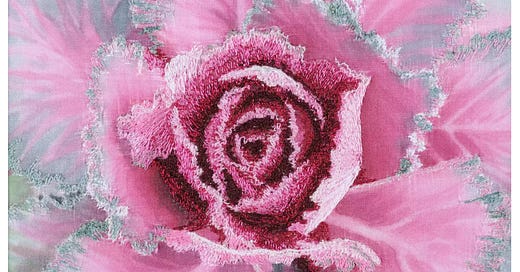“The full moon shone brightly between the trees, so I was able to see, a few yards in front of me, the origins of a distressing noise. It was two cabbages having a terrible fight. They were tearing each other's leaves off with such ferocity that soon there was nothing but torn leaves everywhere and no cabbages.
"Never mind," I told myself, "It's only a n…
Keep reading with a 7-day free trial
Subscribe to The Colour | Newsletter | Lab | Community to keep reading this post and get 7 days of free access to the full post archives.



